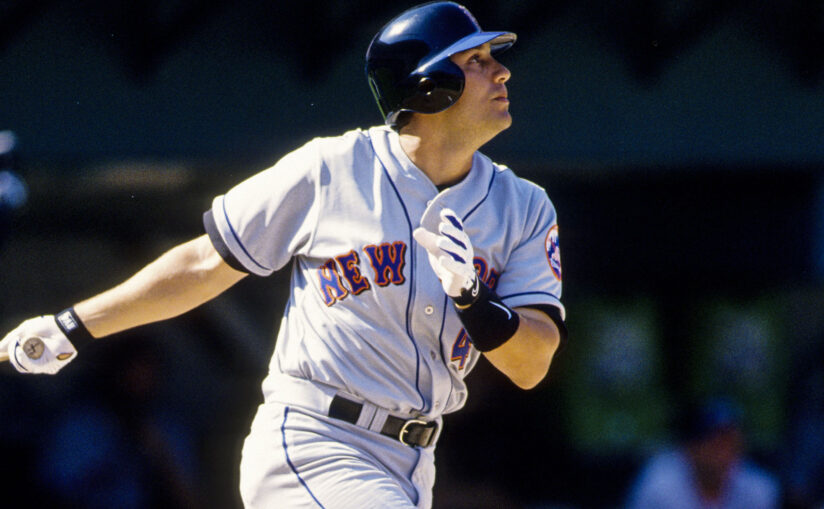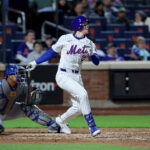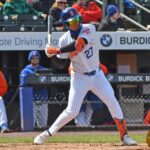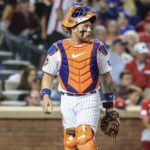
This offseason, we’re looking at the Mets’ history with free agency: their best uses of money and their worst. Number 10 was among the most underrated Mets ever and Number 9 was another pitcher who charted a unique road to stardom. Next is a third baseman remembered for one of the greatest moments in franchise history.
His career as a Met lasted just three years. He was fully healthy for one. But that season alone justified the signing of Robin Ventura in December 1998.
The addition of his elite glove solidified an all-time defensive infield—by the standards of Sports Illustrated or any metric. And his 32 homers, 120 runs batted in and 130 OPS+ over a sensational 1999 season proved he could help generate runs as well as stopping them. That year was punctuated by his “Grand Slam Single” in the NLCS—a signature Mets moment of that era.
Ventura came to Queens on a four-year, $32 million contract already stocked with amateur, collegiate, and professional accolades. He had been a Golden Spikes winner, an Olympian, as well as an All-Star and five-time Gold Glove winner with the White Sox.
At 31, he proceeded to have a career year—establishing highs in batting average, slugging percentage, OPS, hits, and RBIs. His continued individual fielding prowess at the hot corner earned him another Gold Glove and the collective efforts of Rey Ordoñez, Edgardo Alfonzo, and John Olerud produced a historic infield. In 1999, the quartet combined to make only 33 errors.
When the NL MVP voting was tallied, Ventura placed sixth—earning more votes than even Mike Piazza. Over a two-month stretch in which the Mets dug themselves out of an early season hole and went 40-15, Ventura batted .337 with 16 home runs and 48 runs driven in.
When the Mets desperately needed wins during the regular season’s final series against Pittsburgh, Ventura delivered multiple times to keep playoff hopes afloat.
With some players, it’s hard to determine their defining moment. For Ventura, it’s clear: the bottom of the 15th inning in Game 5 of the 1999 NLCS, bases loaded, one out, score tied at three.
A hit, a walk, or a sacrifice fly would’ve done the job. Before Ventura swung his bat on the fourth pitch from reliever Kevin McGlinchy, this game had already been cemented as a postseason classic. What followed became ingrained in Mets folklore and created one of the most unusual outcomes of all the October thrillers. It’s Ventura’s signature play, but only because of its rarity and the drama that preceded it. His hit and subsequent attempt to circle the bases was an exclamation point on an epic five-hour, 46-minute chapter.
Ventura battled injuries throughout that ’99 postseason. It was an unfortunate trend that continued over the next two years and subsequently sapped his production.
Still recovering from off-season surgery on his knee and right shoulder, Ventura couldn’t swing as comfortably as before, nor could he throw as sharply. It would be only 87 games before his shoulder flared up and sent him to the disabled list.
His average fell to .232, although he still managed 24 homers and 84 RBIs in 141 games. As New York defeated the Giants and Cardinals in the playoffs, Ventura’s contributions were few— yet still vital. He drove in two of the four runs in the NLDS clincher over San Francisco, then tallied three RBIs in Game 4 of the NLCS against St. Louis.
In their lone World Series victory, Ventura homered at Shea against the Yankees. Ventura’s 2001 campaign did not lead to better health. His 108 hits were a career low for a season in which he played at least 100 games. The Mets put an end to Ventura’s Queens stint by dealing him across town to the Bronx.
In total, he hit .260/.360/.468 with 77 home runs and a 113 OPS+ over three seasons. The overall book on Robin Ventura as a Met was short on time but not short on thrills. He compressed several moments into three seasons while also ending the franchise’s trend of free-agent signee catastrophes that plagued them during the 1990s.















